Sci-Tech
Chevrolet Orlando: Wave goodbye to the Great American MPV
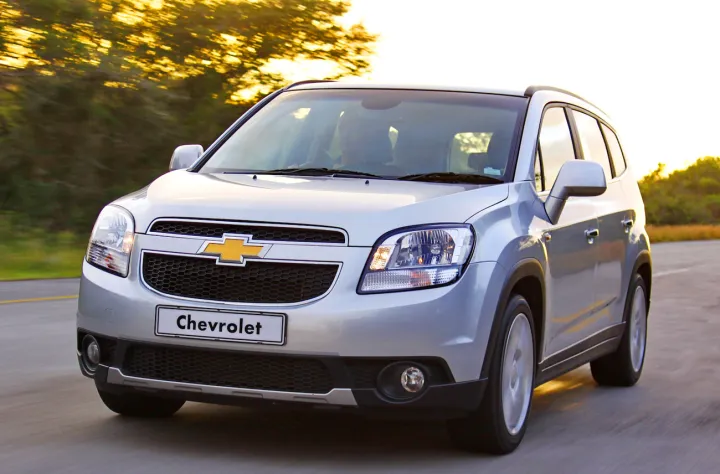
The good old US of A considers itself a pioneer of those big, brash, gas-guzzling people carriers commonly referred to as MPVs (Multi-Purpose Vehicles). But while the Chev badge on the nose of the new Orlando remains quintessentially American, the brand’s new MPV is cut from cleaner, more contemporary (and foreign) cloth. By DEON SCHOEMAN.
The East London Grand Prix circuit is arguably South Africa’s oldest and most historic race track. Here, on tar scarred by the joint onslaught of inclement weather and relentless driving, the sense of history – of legend – is almost tangible.
Among the famous names that competed here in the circuit’s 1960s heyday were the likes of Graham Hill, John Surtees, Jim Clark and Bruce McLaren. SA’s only F1 world champion, Jody Scheckter, also cut his racing teeth on the daunting track.
Between them, the off-camber Potter’s Pass Sweep and downhill Rifle Corner are among the fastest curves in local racing, especially since they run in sequence and offer little more than a grassy verge for run-off. It’s white-knuckle, deep-breath stuff, challenging enough to make grown men whimper.
The Chevrolet Orlando was not at all intimidated by these illustrious surroundings when we drove – rather more sedately than Scheckter and Co., I have to add – around the glorious track earlier this week. General Motors SA launched the MPV in the area, and I couldn’t let the opportunity pass to drive on a circuit so rich in heritage.
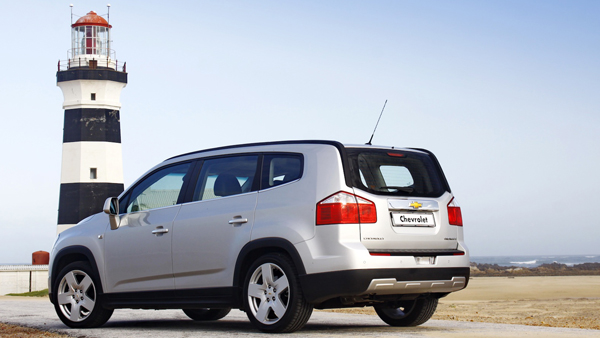
As it turns out, the undulating B-roads that link the track to the East London metropolis were as good as any to put the new Chevrolet MPV through its paces. After all, the bumpy tar, pockmarked with potholes and punctuated by dips and ruts, is pretty much representative of any South African road in the 21st century.
The Orlando is what MPVs generally are – a box on wheels, designed to maximise interior space, while retaining a manageable footprint. But this is a box with attitude. Its most striking angle is from the front, where a bold grille is garnished with a massive Chev “bow-tie” logo.
What could have been slab-sided flanks are rescued by the chiselled outlines of the substantial wheel arches, and an accentuated shoulder line. The rear treatment is almost self-consciously geometric, with the strong graphic lines of the tail light clusters and a lower scuff plate adding a touch of visual attitude.
However, the Orlando is neither huge nor brash. It doesn’t even look American, despite Chev’s quintessentially US identity. And while GM likes to refer to its Eurocentric styling, that’s not exactly true, either.
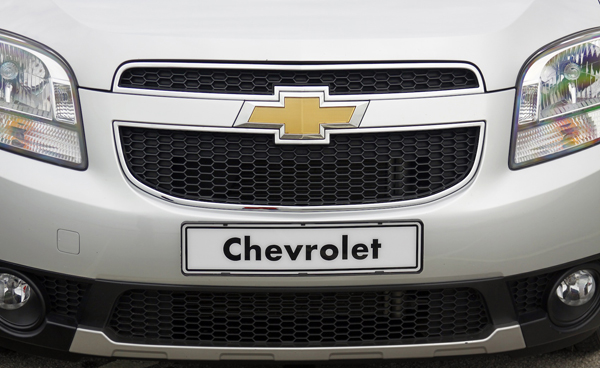
Instead, the design is clean, contemporary and, apart from that bold front end, even slightly anodyne. The Orlando was created and developed in Korea by what used to be Daewoo and is today a core part of the Chevrolet operation. And that explains the Orlando’s vaguely metrosexual presence.
Considering that it’s only 4.65m long and 1.84m wide, the Orlando boasts an impressively spacious cabin. It looks and feels a lot bigger than those exterior dimensions suggest, with three rows of seats providing accommodation for up to seven adults.
The front two bucket seats are almost separately cocooned in a cockpit divided by an imposing centre console, which houses the controls and displays for the sound system and the climate control.
Blue graphics and illumination add a bit of sci-fi class, and the ergonomics are intuitive – you don’t need to read the manual to find your way around the key functions and features.
As one would expect of an MPV, the raised seating affords a majestic view of the Orlando’s surroundings, which does much to instil confidence when manoeuvring the Chev in and out of tight parking spaces. The second and third seating rows are raised even higher, theatre-style, so that everyone inside has a clear view.
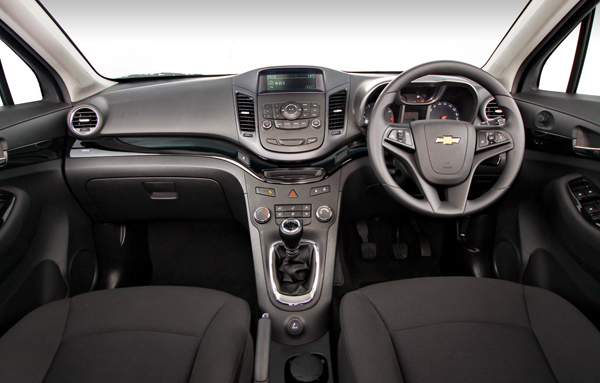
The Orlando comes in two levels – LS and LT – but both feature a similarly comprehensive list of standard kit. In fact, except for some brightwork, bigger wheels and a leather interior on the LT version, there’s not much to choose between the two.
Both have every conceivable mod con – trip computer, cruise control, remote central locking, electrically operated windows and mirrors, and auto wipers among them – to make life in the Orlando a breeze.
Even more importantly, Chev has paid comprehensive attention to safety, equipping the MPV with six airbags, ABS brakes and electronic stability control, as well as inertia reel seatbelts for all seating positions and Isofix child seat mountings.
The overall impression is smart and even upmarket, but some of the plastics are still too hard to bear close scrutiny.
However, the cabin’s most important party trick is the way the second- and third-row seats can be configured in multiple ways. The two rearmost seats fold away into the cargo floor, leaving a decent 458-litres of luggage space.
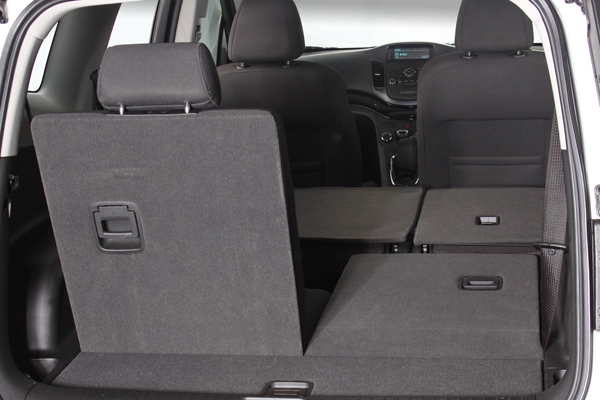
Need more room? Then the second-row bench seat can also be folded flat, extending the cargo area to 856-litres. The seat is split 60:40, and each can be folded or tumbled individually.
With all seven seats raised, you really can fit seven adults into the Orlando, but then luggage space is virtually non-existent, requiring a further investment in the ubiquitous Venter trailer or a roof-mounted luggage box.
Still, the Orlando offers a level of space, versatility and practicality that’s impressive, even in the MPV context.
Given its size, and its 1.526kg kerb mass, you’d expect the Orlando to be powered by something big and muscular. Which makes the presence of a humble 1.8-litre engine under the bonnet somewhat surprising.
The fuel-injected, twin-cam four-cylinder unit produces a decent 104kW at 6,200rpm, combined with a torque maximum of 176Nm at 3,800rpm. Drive is to the front wheels via a five-speed manual gearbox.
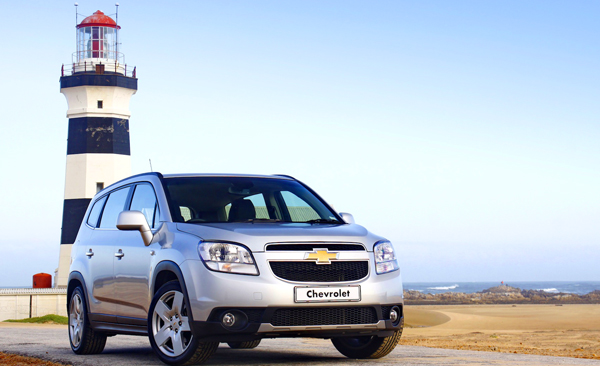
The result is performance that’s brisk rather than sporty – but then, it’s not meant to be a sports car either. Chevrolet claims a 0 to 100km/h sprint time of 12 seconds flat, and a top speed of 185km/h, and both statistics feel about right in practice.
The Orlando gets off the mark smartly enough, and the well-chosen gear ratios make the most of the engine’s output, as long as you’re prepared to use most of the rev range. In fact, it’s just as well that the gear shift is smooth and positive, because keeping the engine on the boil entails quite a bit of cog swapping.
However, I’d be slightly concerned about the Orlando’s dynamic abilities under full load – with a family of five and a boot filled to the brim, the performance will lose some of its sparkle, and frequent shifts to fourth will be the norm on uphills.
Chev does offer a 2.0-litre turbodiesel-powered version in some markets, which has the advantage of much more torque and exceptional long-distance cruising potential. But GM here believes a diesel model, especially when combined with an automatic gearbox, would elevate the Orlando’s pricing too severely.
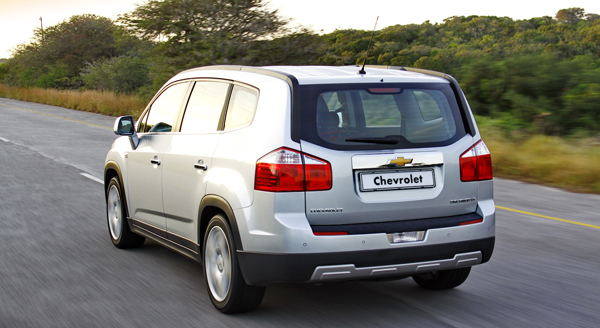
Fuel consumption is reasonable, at a claimed 7.2-litres/100km for the combined cycle, but much depends on usage patterns, load and driving style. Piloted with gusto in urban environments, don’t expect much better than 11-litres/100km or so. In open road conditions, that 7-litre mark seems more achievable.
On the move, the Chev feels composed and resolute. The suspension manages to soak up most of the dips and bumps, but never feels soggy, while the spring rates are actually quite firm, ensuring good control through corners.
As is so often the case, the steering places too much emphasis on assistance and too little on feedback, but given the Orlando’s family motoring role, taking the effort out of steering the car at slow speeds is perhaps the more important priority. And indeed, in tight spots, it’s easy to manoeuvre.
Dynamically competent, visually appealing and above all spacious and practical, the Chevrolet Orlando is family motoring personified. It offers a lot of space in a versatile cabin, a lot of comfort and convenience kit, at a price point that expresses all-important value.
That’s especially true of the LS version, which manages to keep its price tag just under the R250,000 mark, while still including a decent three-year/60 000km service plan. It all equates to a lot of car for the money – and value is ultimately the Orlando’s most compelling talent. DM
VITAL STATS
Chevrolet Orlando 1.8 LS
Engine
In-line four-cylinder, 1,796cc, DOHC
Gearbox
Five-speed manual
Power
104kW at 6,200rpm
Torque
176Nm @ 3,800rpm
0-100 km/h
12.0sec
Top speed
185km/h
Fuel consumption
7.2-litres/100km (combined)
CO2 emissions
171g/km
Retail price
R254,400






 Become an Insider
Become an Insider